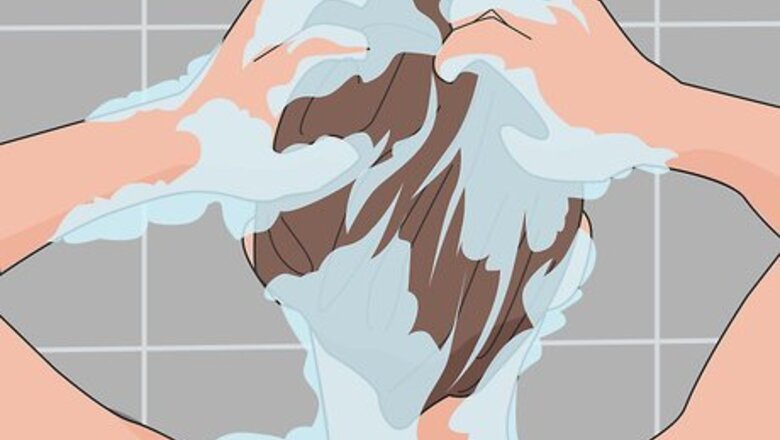
views
Removing Product Buildup
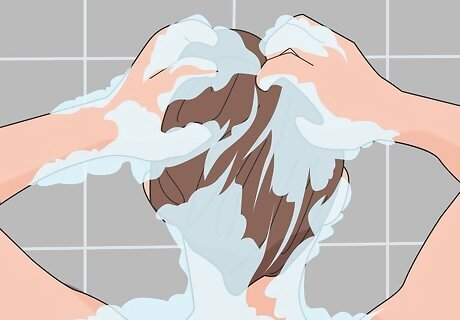
Shampoo your hair to remove the excess conditioner. All you really need to do to get rid of the over-conditioned feeling is to wash your hair. Shampoos contain detergents that can remove product and oil buildup on your hair and scalp. Apply a coin-sized amount of shampoo to your palm, then massage it into your hair and scalp. Rinse out the shampoo in warm water. Use a daily clarifying shampoo if you have one, since it will remove excess product buildup. However, any shampoo will work. If you’re worried your hair still feels greasy, go ahead and shampoo your hair again. However, this is typically not necessary.
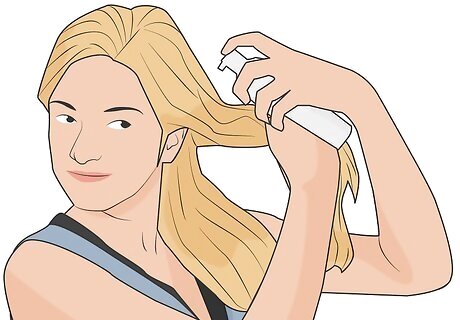
Spray the greasy spots with dry shampoo if you’re short on time. It’s best to use a regular wet shampoo to remove the excess product buildup. However, you might not have time to wash your hair. Instead, spray dry shampoo onto just the areas that look oily, then massage the product into your scalp. Comb out any excess dry shampoo before styling your hair. Choose a dry shampoo that’s made for your hair color. You can buy a dry shampoo at a beauty supply store, a drug store, or online. Try not to use a dry shampoo 2 or more days in a row because the product can build up on your hair and scalp. This can cause itching or irritation.
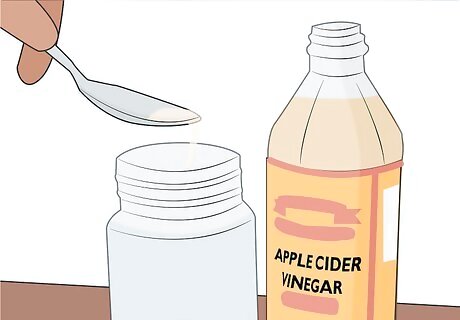
Do an apple cider vinegar rinse after shampooing for heavy buildup. You likely don't need to use an apple cider vinegar rinse unless your hair is extremely greasy. To make the rinse, mix 1 part apple cider vinegar and 4 parts water in a spray bottle, then shake to combine them. After you rinse out your shampoo, spray the apple cider vinegar rinse on your hair. Massage the rinse into your hair and scalp for about 30 seconds, then rinse it out. Always dilute your apple cider vinegar, as it can burn your skin if you don’t.
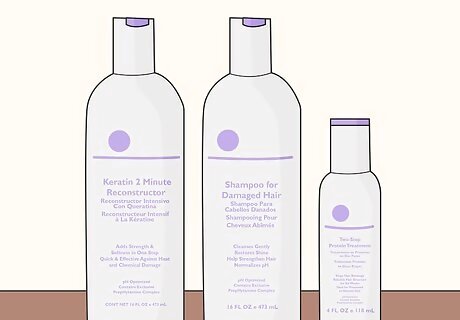
Use a protein treatment to improve the look of limp hair. Protein treatments add proteins to your hair to hopefully make it stronger. This typically makes your hair strands stiffer, which can add volume to limp, lifeless hair. Follow the directions on your protein treatment and apply it to your hair. Then, rinse the treatment out as directed. Protein treatments are often combined with conditioners. You can apply these products after you wash your hair and shouldn’t have to worry about your hair looking greasy again. Protein treatments may damage your hair if you use them too often. Always check the label to find out how often you can use your protein treatment. Generally, you'll do a treatment every 4 to 6 weeks, but you can use some protein treatments as often as once a week. You can find protein treatments at a beauty supply store, a drug store, or online.
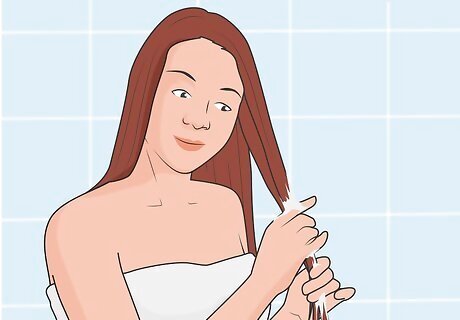
Apply a light coating of conditioner to the lower part of your hair only. Since your hair was over-conditioned, you don’t need to use much conditioner after you wash out the excess buildup. If your hair is straight or wavy, just coat your ends with conditioner. If you have curly or textured hair, apply a thin layer of conditioner from mid-shaft to your ends. Don’t apply any conditioner to the top of your head, especially your roots. If you apply conditioner over all of your hair, it’ll likely look greasy again.
Recognizing over-Conditioned Hair
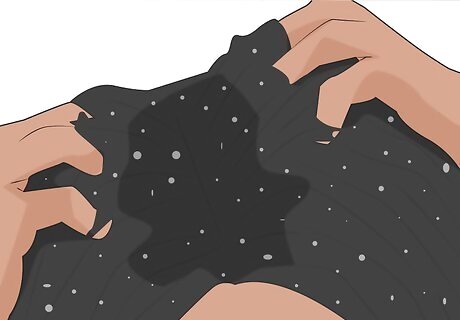
Notice if your hair looks greasy. Conditioner is supposed to make your hair sleek, shiny, and manageable. You may also be using leave-in or styling products that add moisture to your hair to help control tangles and frizz. However, these products can build up on your hair, especially if you don’t shampoo every day. To see if your hair is greasy, check for oil slicks, extra shine, and texture that feels wet. Because your hair is so greasy, it might slide out of a hair clip or hair pin. Try putting your hair up to see if strands start to fall out. Greasy hair can also look super shiny, especially at your scalp.
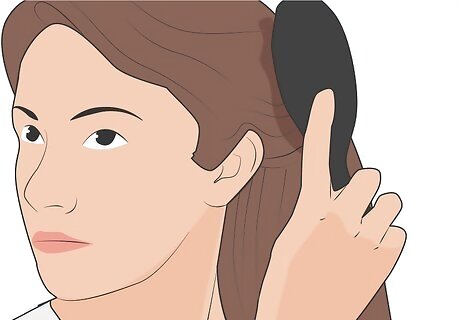
Check if your hair looks limp and lacks volume. Because of product buildup, over-conditioned hair usually just hangs there, even if you try to style it. Examine your hair in the mirror to see if it looks lifeless and seems to cling to your scalp. This might be a sign that your hair has too much conditioner left on it. You might also notice that your hair holds the style for a short period of time but loses its pizzazz faster than usual. For instance, you might curl your hair only to have it fall flat soon after.
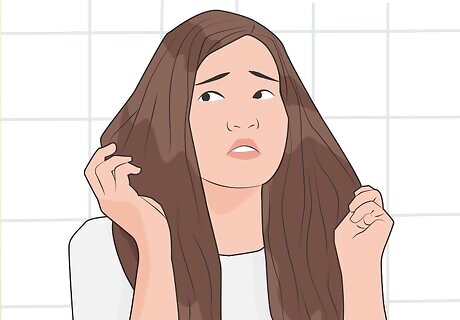
Feel your hair to see if it’s much too soft and heavier than usual. While soft hair is normally a goal, it can also be a sign your hair is over-conditioned. In this case, your hair might be so soft that you can’t get it to hold a style. At the same time, your hair might feel abnormally heavy when you try to gather it, since there’s so much product buildup on it. Play with your hair to see if it feels abnormally soft or heavy. Test this out by gathering your hair into a ponytail. Does it feel heavier than usual? Are you having trouble gathering all of your hair together? Does it seem like the ponytail holder is sliding down your hair? These might be signs your hair is over-conditioned.
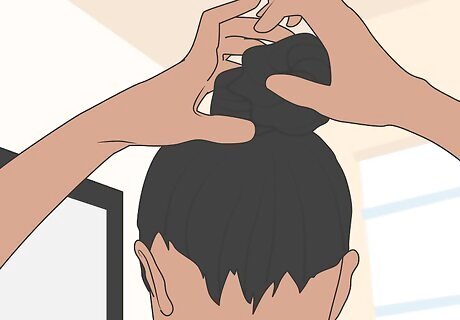
Style your hair to see if it holds or if your hair is unmanageable. One of the main problems caused by over-conditioning your hair is unmanageability. While your hair might be limp, shiny, and soft, it simply won’t hold a hairstyle. Try curling your hair, putting it up into a bun, or twisting it up with a hair clip. If you’re having trouble getting the style to stay in place, your hair is likely over-conditioned. Choose a style you can normally do with your hair. For instance, if a top knot is your go-to lazy day hairstyle, it’s probably the best test to see if your hair is over-conditioned.
Conditioning Your Hair Properly
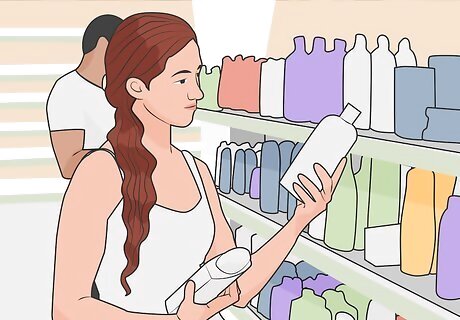
Pick a conditioner that’s formulated for your hair type. In some cases, using the wrong conditioner for your hair type might cause over-conditioning. Check the labels on conditioner bottles to find the right match for you. If you’re struggling to pick the best option, ask your hairstylist for advice. For instance, use a conditioner for color treated hair if your hair is colored. If you have dry hair, choose a moisturizing conditioner or one that’s labeled for dry hair. If you have curly or textured hair, you might choose a product that’s labeled for curl care.
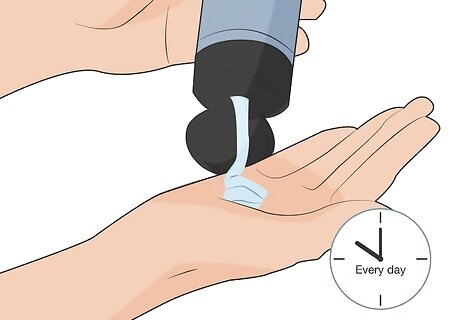
Use your conditioner every time you wash your hair. It’s okay to use conditioner every day, so don’t worry that you’re using it too often. Conditioner helps protect your hair by adding moisture and making it easier to comb out tangles, so always use it after shampooing your tresses. You can also use conditioner alone if you’re skipping a wash.
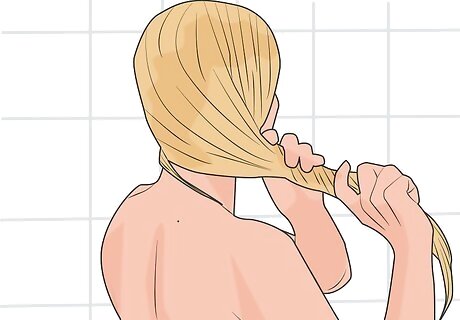
Apply your conditioner from the mid-length of your hair to the ends. Your scalp produces natural oils that coat your hair to moisturize and protect it. Generally, these oils easily coat your roots, so you don’t need to apply conditioner there. Instead, only coat your hair with conditioner from the mid-length down to the ends. Otherwise, the upper part of your hair might start looking greasy. It’s okay to lightly spritz your leave-in product near your roots if you have trouble detangling your hair after you wash it. However, apply a tiny amount at a time so you don’t accidentally apply too much.
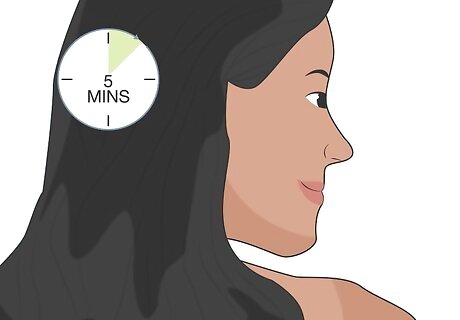
Leave your conditioner on your hair for about 5 minutes before rinsing. While it’s important to give conditioner time to work before you rinse it out, letting it sit on your hair for too long may cause over-conditioning. Wash and condition your hair at the beginning of your shower. Then, continue bathing for 5 minutes while the conditioner sits on your hair. Finally, rinse out the conditioner in cool water. Cool water closes your hair shaft, which can make your hair look shinier.
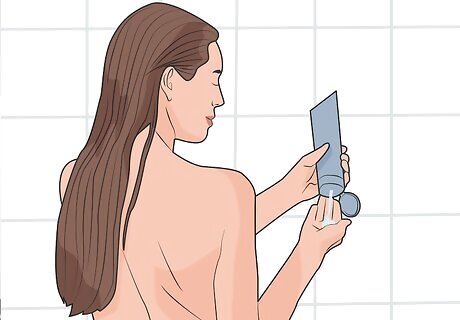
Limit how many leave-in and styling products you use. Leave-in conditioners and styling products can help you achieve the hair of your dreams. However, using too many styling products can be harmful to your hair and may cause dreaded product buildup. Opt for hair styles that you can achieve with minimal hair products. Additionally, follow the instructions on the products you use to make sure you’re applying the right quantity. For instance, don’t use a leave-in conditioner and a hair oil together unless your hairstylist specifically advised you to do so. Try to choose hairstyles that work with your natural hair texture. This way you’ll need fewer products to get your desired results.
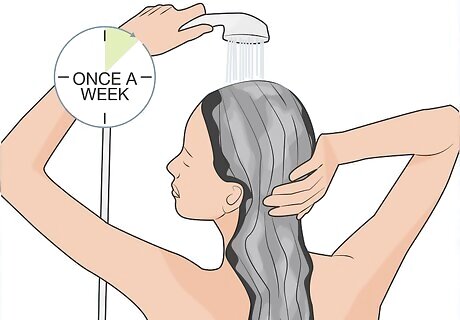
Deep condition your hair no more than once a week. You might be using deep conditioners to make your hair healthy, shiny, and strong. However, using these products too often can leave you with greasy, lifeless locks. Limit yourself to 1 deep treatment a week. Follow the directions on your product label, and leave your deep conditioner on your hair for no more than 20 to 30 minutes. Decrease your deep conditioning treatments to every 2 weeks or once a month if your hair continues to look over-conditioned. You can find deep conditioning treatments at a beauty supply store, a drug store, or online.


















Comments
0 comment